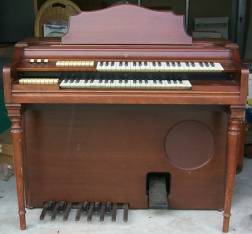
You see, people play those Hammond CLONE WHEEL organs like the Hammond SK-1 and the red Nord, but a true Hammond player knows they aren't the real deal anymore than a guitar player knows a Line 6 is a Marshall or Vibro King ( which I found one for $300 once. Which in 96' was a great deal for a Hammond B3 in a home cabinet with speakers. I found the ad in a penny saver at the Red Lobster. I actually picked up a mint 1962 Hammond A102 for $800 when visiting my sister in Pittsburgh in Christmas of 96'. I would check the thrift stores and happened to find a 56' cherry cabinet Hammond M3 for $25 that I honestly think I liked it better than ANY Hammond I've owned. As I think back I wonder if I'd not been given the tube oscillator Lowrey if I'd ever been so taken by the organ. So ironically it was that Lowrey tube organ that woke me up to organ. I think the L100 just needed the Leslie speaker element but I didn't know what a Leslie was then. I liked it a lot!Įven though we had a Hammond L100 sitting at home I played the piano more. A sound I never paid much attention to previously, this was different. From that day forward, 20 years after I got my first guitar at the age of 12, a mahogany Gibson parlor acoustic model LG-O, followed by a blood red Continental electric at 13, and a mahogany Gibson Melody Maker at 16.and many many om that day forward I had the utmost respect for this 'new old sound' that had come my way. I thought, okay here we go, it's going to be cheesy or dreary.but I was blown away! It was just awesome hearing that TONE! It was very easy to liken it to the same feeling I get when hearing a great guitar tone. Back in 1996 I was given a little Lowrey tube organ, a 1960 LSC-1. We as guitar players need to be careful what we are making our amps out of. Which brings me up to the title of this thread. I soon realized that music could be more than a wall of Marshalls, even though I loved my 6-E元4 & 5 ECC81 & 83 Dallas Arbiter Sound City 120R and their 50 watt model.Īh' it's been 30 years, but music is timeless and so since those earlier days I have gotten into all kinds of music. I built every project except the metronome and the mini-amp.
#Wurlitzer organ 4410 Pc#
Plus I was able to print the PC boards for all of the projects in Craig Andertons book, Electronic Projects For Musicians. I was fortunate enough to have a dad that worked at an electronics firm and so he helped me build a synth from lots of old rotary switches and pots they had in their old stock. So that was my first real amp I got into. Let me tell you, that T-3150A looked frightening in it's dusty old grey metal art deco cabinet, but it worked! It had some hiss, but the hiss was so subtle and blissfully filled with white noise I kind of liked it. And there was this cream colored 8-track with vegetables all over it she even through in.hint hint.
#Wurlitzer organ 4410 manual#
Then when I was 14 I found a THORDARSON T-31W50A ( PhotoFact Manual Thordarson T 31W50A 19 | eBay ) at a yard sale for $10. I loved that amp! I added a master volume and cascaded the preamp tubes ( in that order come to think of it).

Still it was untouched original under the hood. I paid $25 for my first black face Fender Bandmaster head because it had cigarette burns across the front. Fortunately I was somewhat poor in those early days, but the tube amps were fairly abundant and there were cheap ones to be had that were excellent models, but a little down at the heel. I won't say I'm a saint, there have been several amps I cringe now to believe I defaced them, but back in the 80's my goal was to turn as many amps into Marshalls as I could get my hands on.
#Wurlitzer organ 4410 mods#
I've built several guitar amps and have done lots of fairly non invasive mods to just about every major brand of tube amp out there. I also love the electric/electronic organ. Fact is, I am a guitar player who has been playing for 36 years now and love the instrument. Actually that's just me being clever.or trying to be.


 0 kommentar(er)
0 kommentar(er)
